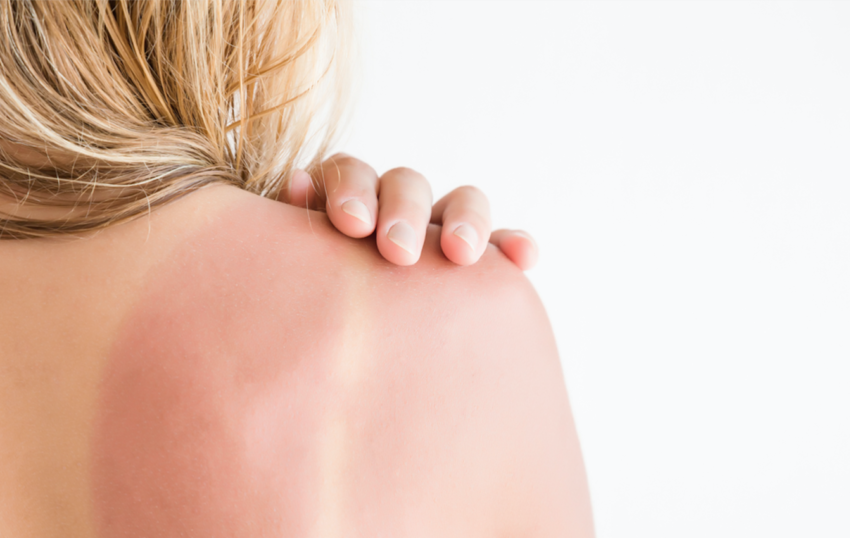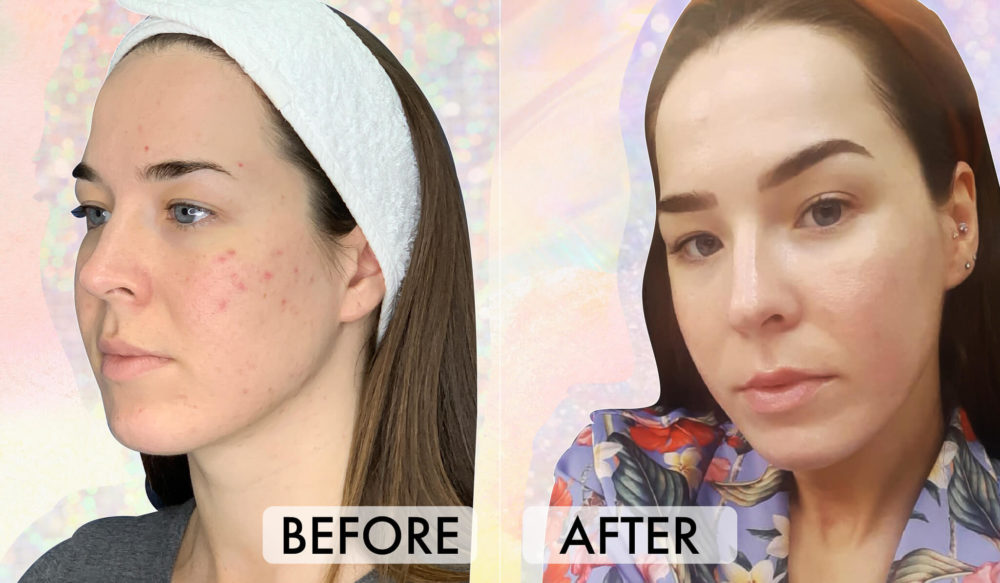Damage Control 101: What To Do When You Get Sunburned

Source: FotoDuets/Shutterstock
No matter how hard you try to avoid it, at some point, chances are you’ll experience some form of sun damage in your lifetime. Perhaps you just missed a spot when you were applying your SPF, or maybe your sunscreen didn’t provide the protection it promised, whatever the case, the most important thing is to be proactive. Firstly, we’re going to state the obvious: the best form of prevention is sun protection, so check out our fave sunscreens for your face, scalp, and body here, and don’t forget to reapply every two hours. However, if you do find yourselves with a sunburn, you need to know how to identify the damage, how to treat it, and of course, how to learn from your mistakes! To help us understand the science of sun damage, we spoke to the skincare experts at the Harley Street Dermatology Clinic to find out the long-term side effects of sun damage and how to treat sunburn when it does strike.
How To Identify Sun Damage
Sun damage can be visible in your skin in a variety of different forms, most commonly in redness, inflammation, and of course, the dreaded peel. Consultant dermatologist Dr. Abha Gulati, told us that “dry spots, wrinkles, lines, changes in pigmentation such as freckles and light patches, and fragile thin skin” are also signs of skin damage. In more severe cases, it can even appear as “actinic keratoses, dry scaly patches which can lead to skin cancers.”
Remember, it’s Permanent…
When you do experience sun damage, although it may not seem permanent at the time – let’s be real, we’ve all uttered the words “it’ll turn into a tan in a couple of days” – the damage to your skin is forever. As Dr. Abha Gulati, said, “Sun damage due to UV exposure is a slow long process which begins in childhood.” Although “there are creams that can help with the symptoms of sunburn and the appearance of signs of sun damage, at the moment, there’s no proven effective way of reversing the signs of sun damage within the skin.” This is why the best approach is to prevent it “with regular use of sunscreen with SPF 30 and a 5-star UVA rating.” Check out our all-time fave sunscreens for face and body and our faves that layer FLAWLESSLY under your makeup.

via Giphy
How to Treat Sunburn Immediately
Thankfully, if you treat your sunburn correctly, you can speed up the healing process, but it’ll still usually take between three to seven days to heal, depending on how badly you’ve burned. Here’s our foolproof step-by-step guide:
Step 1: Get Out of the Sun
We totally feel the allure of a long day at the beach, but if you’re burning, it’s a sign that you should probably call it a day and stay out of the sun the following day too. In a recent study by the American Academy Of Dermatology, statistics showed that experiencing five or more severe sunburns between the ages of 15 and 20 will increase your risk of melanoma – the most deadly type of skin cancer – by 80%. Also, never underestimate the value of a sun hat – not only is it chic, but it’ll also protect your scalp from burning, an area of the body you often forget to protect.
Posts You'll Love:
Step 2: Go, Go, H20!
When you burn, you essentially dehydrate your body. This means you need to rehydrate in every way possible – drink water, bathe in cool water, and cool down. If a cold shower sounds too unbearable, opt for a cooling bath as hot or chlorinated water will only dry out your skin further. You can also add a tablespoon of baking soda to your bath, as this has been shown to reduce swelling and itching. This is most effective when the baking soda dries on your skin, so try to air dry rather than rub your skin with a towel, which can further aggravate sensitive skin.

via Giphy
Step 3: Take an Anti-Inflammatory
Dr. Abha insists as soon as you come out of the sun, you should “drink plenty of cold fluids and take painkillers such as paracetamol or ibuprofen.” This will help reduce inflammation and relieve any pain.
Step 4: Moisturize
Put some of that moisture back into your skin with a hydrating lotion. Just make sure that your lotion is fragrance-free, as this could irritate the skin. Instead, look for ingredients like soy, oatmeal, aloe vera, and ceramides, as they will seal the moisture in your skin and soothe any redness. Whatever you do, don’t apply vaseline to sunburn, as this will trap the heat. We also love using pure aloe vera gel – if you can get it straight from the plant, that’s even better.
Step 5: Protect
If you experience any blistering, resist the urge to pop the blisters as this will only cause further irritation. Instead, keep them dry, clean, and covered with a bit of gauze. Although, during the night you can remove the bandage if it’s comfortable to do so.
How to treat dark spots and hyperpigmentation:
As dermatologist Dr. Friedmann reminds us, “obviously, prevention of sun damage in the first place is critical.” Sun exposure is the cause of skin aging, and so the advice is to cover up and use a high-factor sunscreen. However, you can “treat dark spots and uneven tones using fading cream or red light laser therapy, as well as cryotherapy,” which uses ice-cold temperature to remove and freeze skin lesions and correct skin tone. Red light therapy and retinol are probably the most effective when you are trying to improve the appearance of pigmentation and even tone, and you’ll see much swifter results. Get all the deets about retinol here or check out The Ordinary’s Alpha Arbutin 2% + HA Hyperpigmentation Serum, $10, which is specifically designed to target pigmentation.
To make sure you don’t get sunburned in the first place, check out these SPF myths you thought were true.
Disclaimer: Every product we review has been independently selected and tested without bias by our editorial team. Although some brands allow affiliate links, we never take payment to review products, so we may earn a commission if you purchase a product by clicking on one of our links.























Leave a comment